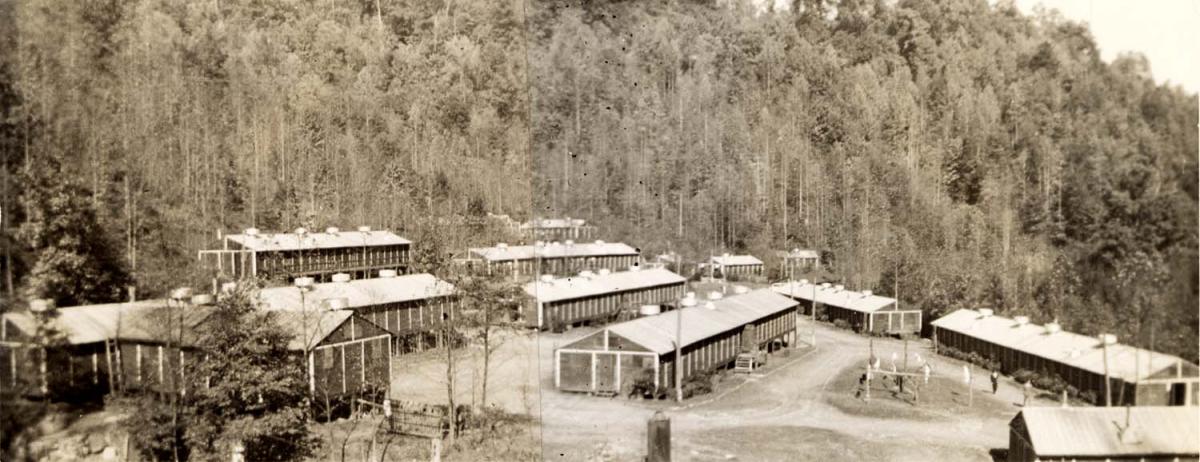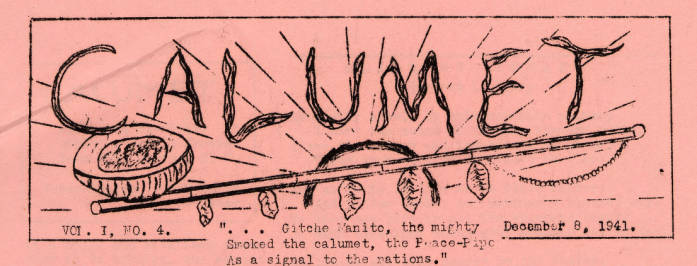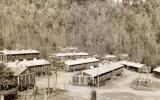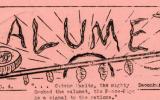CPS Unit Number 019-01
Camp: 19
Unit ID: 1
Title: Buck Creek
Operating agency: AFSC
Opened: 8 1941
Closed: 5 1943
Workers
Total number of workers who worked in this camp: 325
-
 CPS Camp No. 19Buck Creek, Marion, North Carolina.Digital image from the Raymond & Helen Binford Collected Papers (CDGA), Swarthmore College Peace Collection, Swarthmore, Pennsylvania
CPS Camp No. 19Buck Creek, Marion, North Carolina.Digital image from the Raymond & Helen Binford Collected Papers (CDGA), Swarthmore College Peace Collection, Swarthmore, Pennsylvania -
 CPS Camp No. 19Calumet was a newsletter published by the men of Camp 19 beginning in October 1941.Digital Image from American Friends Service Committee: Civilian Public Service Records (DG002), Swarthmore College Peace Collection, Swarthmore, Pennsylvania
CPS Camp No. 19Calumet was a newsletter published by the men of Camp 19 beginning in October 1941.Digital Image from American Friends Service Committee: Civilian Public Service Records (DG002), Swarthmore College Peace Collection, Swarthmore, Pennsylvania
CPS Camp No. 19, Buck Creek, a National Park Service base camp near Marion, North Carolina and operated by the American Friends Service Committee, opened in August 1941 and closed in May 1943. Men fought fires and maintained the park.
CPS Camp No. 19, a National Park Service base camp, was located near Marion, North Carolina thirty miles east of Asheville near the Blue Ridge Mountains. Known as Buck Creek, the American Friends Service (AFSC) operated camp opened in August 1941 and closed in May 1943.
Directors: Raymond Binford, John Ferguson, Felix Greene
The men at American Friends Service Committee camps tended to constitute the most religiously diverse group of men, including men who reported no religious affiliation when entering CPS. At Buck Creek, of the 156 men in the camp in February, 1943, forty-eight reported affiliation with Friends, thirty-one Methodist, fourteen no affiliation, and eleven Jehovah’s Witness, with the rest of the men indicating affiliation with another twenty religious groups. The latter included Baptists, Presbyterians, Jewish, Nazarene, Faith Tabernacle and Positive Christian, among others. (Calumet February 10, 1943 p. 6)
They entered CPS from a variety of occupations, and the numbers from cities were greater than from rural areas.
Men in the Friends camps on average had completed 14.27 years of education, including some with graduate as well as post graduate education. (Sibley and Jacob pp. 171-72)
Men in National Park Service camps fought fires and maintained the parks. At Buck Creek, the men, working in crews of ten, made split rail fences. For the Crabtree Meadows area, they cut and split 29,000 rails. Lloyd Bailey held the record of splitting 150 rails in one day, while the average for a ten person crew was 500 per day. (Calumet, Feb. 10, 1943 pp. 1, 6) Other men worked on rocky hillsides, blasting and crushing rock to be used to maintain the roads. All assisted in fighting fires.
In the fall of 1942, a group of campers envisioning a more vibrant camp program, began meeting to revitalize it. The small group grew to thirty-five, who unveiled a program of training in spiritual development, language study, and culture appreciation. They ordered books, identified instructors, began courses in elementary German, and mapped out a plan for a study of central Europe, including the arts, political, sociological and spiritual development. They planned to offer advanced German and French. Interested in post-war relief effort, the men felt it important to embark on this course, even though the AFSC had not been able to secure clearance for CPS men to serve in foreign relief and reconstruction. The January 11, 1943 issue of Calumet, the camp newspaper, outlined the program, and Jim Mattocks presented the rationale for effective foreign relief and reconstruction.
Those who have done relief work tell us that the most important thing that these starving, bitter people need is human kindness and love. Surely the foundation of a stable world of peace and brotherhood cannot be built on food and blankets alone, without some unifying bond of human understanding.
This need can be met by C.P.S. where we are free of hate complexes and war hysteria. There is no assurance that any of us can go abroad. But if we can in some way develop greater spiritual resources and insight, they will be of tremendous value in our lives anywhere. . . . (p. 2)
The men received encouragement from AFSC’s Douglas Steere, who visited the camp as the program was forming. John Swomley, from the Fellowship of Reconciliation (F.O.R.), who helped revive the F.O. R. meetings at the camp, also supported the changes.
The F.O.R. group at Buck Creek petitioned AFSC to accept blood donations from local campers for use by Friends Ambulance units in Europe and other countries.
In early 1943, men in the AFSC camps circulated a petition urging the Federal Government to compensate CPS men for their “work of national importance”. “Declaring that Congress itself had no intention of establishing slave labor for conscientious objectors, the petition cites Public Law 630, which provides that CPS men could be paid at rates not to exceed Army base pay.” In a poll at Buck Creek, seventy-nine percent of the men voted in favor of compensation, and “blasted the idea that CPS men are anxious to work for nothing.” The newspaper included quotes from a dozen or so Buck Creek men interviewed as part of the poll. (Calumet February 10, 1943 pp.1, 3, 4)
R. D. Nanney, who served as cartoonist for the camp paper, wrote a column critiquing the implications of a church-administered C.O. program responsible to the government. In his view, men should have volunteered “to serve society in the Friends pattern” rather than being offered a choice to go to CPS to avoid jail. (p. 2)
In late spring 1943, life at the camp began to wind down, as the camp was to close and be moved to Gatlinburg, Tennessee to fight forest fires. By early May, forty-three men from Buck Creek had gone to open the Gatlinburg camp to be called Camp Rufus Jones, in honor of the early Friends leader. The final issue of Calumet reported that the recreation facilities would be far better than at Buck Creek, but that Ranger Smith of the National Park Service was very concerned to lose the effective Buck Creek fire crews.
Three men had been selected to serve as smoke jumpers in Montana. Bryn Hammerstrom, Harry Burks and Paul Jernigan were to report to Lake Seeley by mid- May.
In addition to Calumet, which began October 1941, the men published The Sphere from April through September of 1942. The men described it as
. . .a frontierless adventure on the part of a few members of this community, who have envisioned the possibilities of a definite means of expressing latent thoughts and emotions. It is felt that such an adventure may offer each member of the camp an opportunity to explore the imaginative realm beyond the limitations of his every day experience.
J. T. McMullen and Franklin Kelley compiled the No. 1, April 1942 issue.
Calumet, Vol. II Number 4 (January 11, 1943); Vol. II Number 6 (February 10, 1943); Volume II Number 8 (March 22, 1943); Volume II Number 11 (May 3, 1943) in the Swarthmore College Peace Collection American Friends Service Committee: Civilian Public Service Records (DG002), Section 3, Box 5.
For general information on National Park Service camps, see Kevin Grange, “In Good Conscience”, National Parks (Winter 2011).
For stories from men who, as COs, walked to a different drummer during World War II, see Mary R. Hopkins, Editor, Men of Peace: World War II Conscientious Objectors. Caye Caulker, Belize: Producciones de le Hamaca, 2010, Calhoun D. Geiger, pp. 4-14.
For general information on CPS camps and units, see Albert N. Keim, The CPS Story: An Illustrated History of Civilian Public Service. Intercourse, PA: Good Books 1990.
See also Mulford Q. Sibley and Philip E. Jacob, Conscription of Conscience: The American State and the Conscientious Objector, 1940-1947. Ithaca, NY: Cornell University Press, 1952.
The Sphere, Number 1 (April 1942) in the Swarthmore College Peace Collection American Friends Service Committee: Civilian Public Service Records (DG002), Section 3, Box 5.
Swarthmore College Peace Collection, Camp periodicals database.

